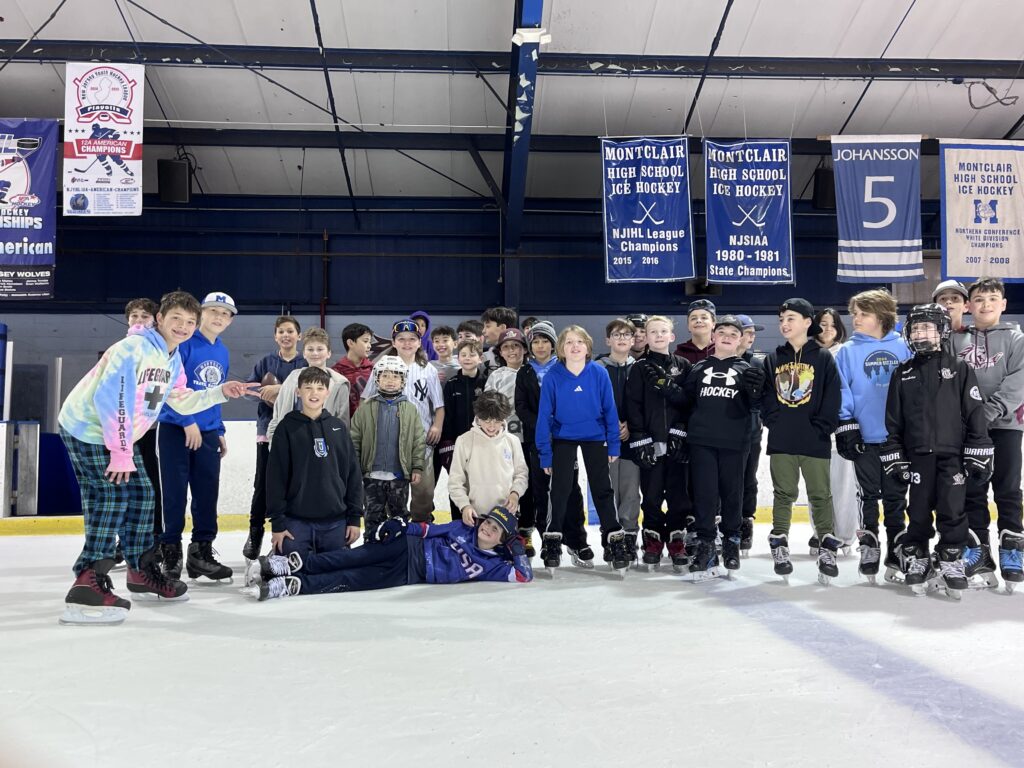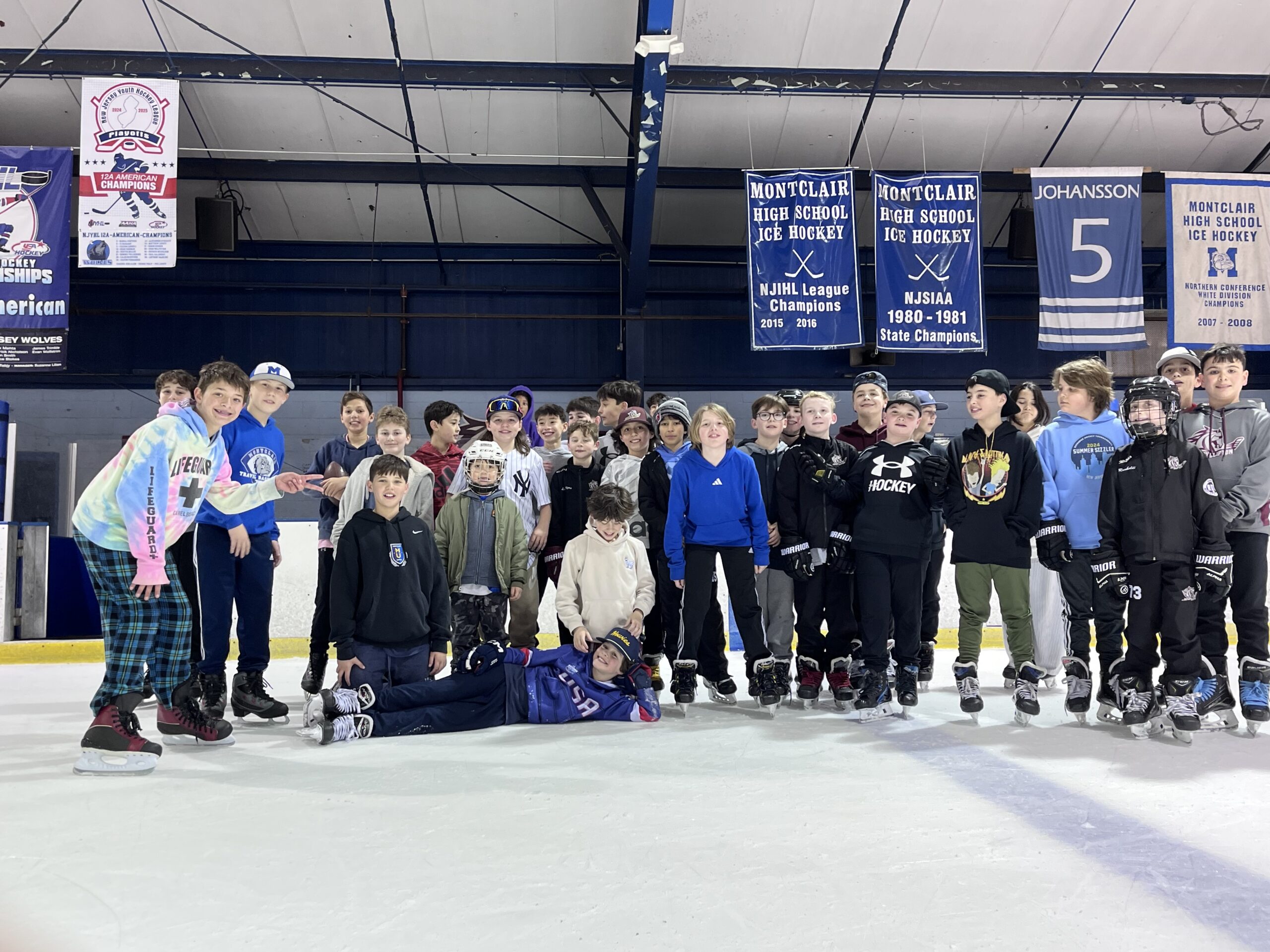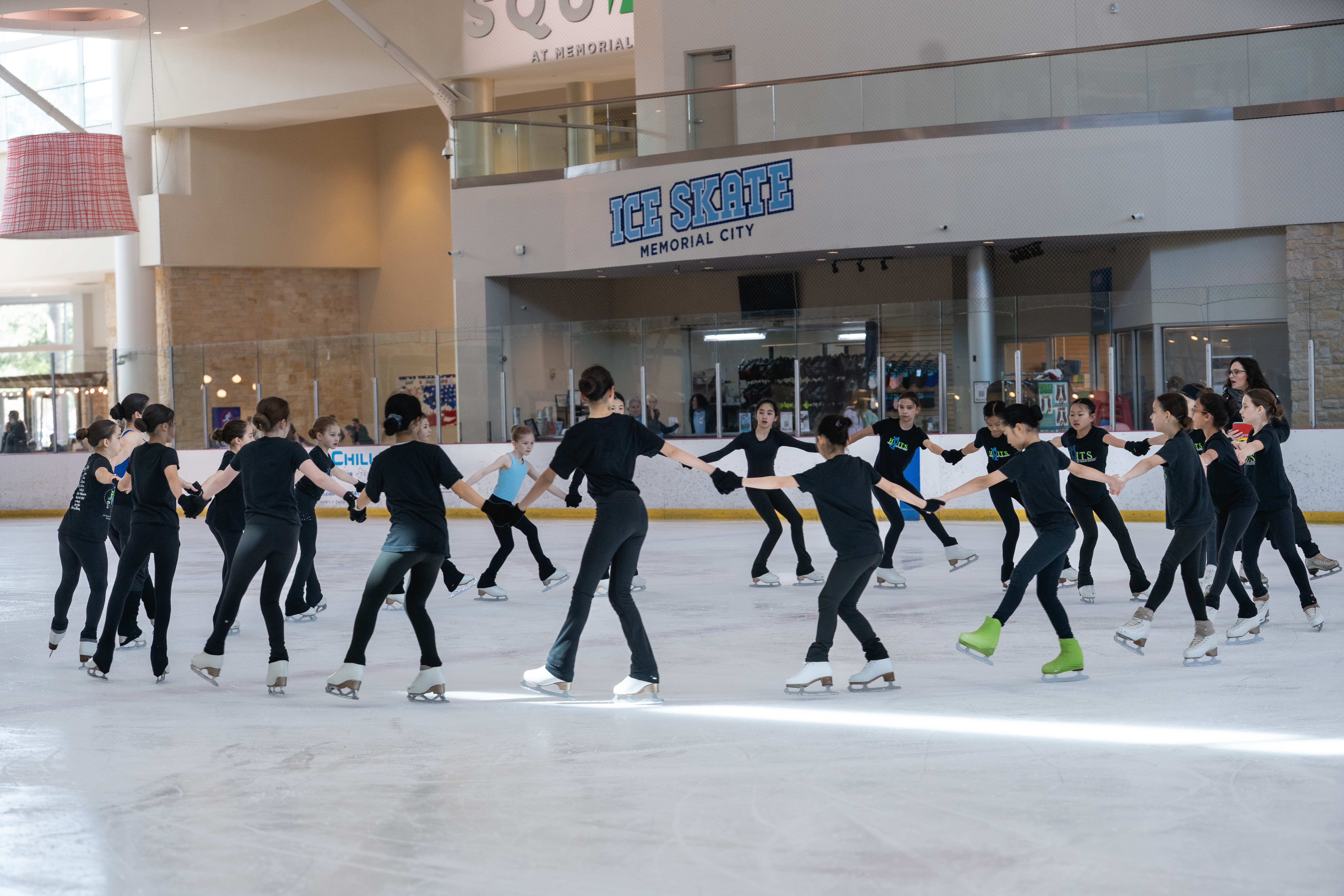By Ali Yenchick
For decades, the Clary Anderson Arena in Montclair, New Jersey, has been more than just a sheet of ice. It’s a community cornerstone, a place where generations have learned to skate, where hockey rivalries have clashed, and where friendships, memories, and dreams were forged.
But this past summer, the beloved rink faced an uncertain future. Years of neglect left the facility in dire need of repair, and the town was dangerously close to shutting it down… forever.
The community faced a daunting challenge: raise $350,000 to cover essential startup costs or kiss that sweet rink goodbye.
What happened next was nothing short of extraordinary.
Rather than accepting that outcome, the community rallied. Parents and program leaders picked up phones. Coaches organized. Local partners lent their support. The town’s Department of Public Works crews rolled up their sleeves to clear the site and prepare it for a rapid turnaround. Everyone pulled in the same direction.
In just six days, the grassroots movement not only met but exceeded this goal, securing the rink’s future and proving its immeasurable value to the people of Montclair.
A Conductor and a Chorus
In the middle of that surge stood local hockey mom and development professional Monica Kurpiewski—not as the headliner, but as the conductor of the symphony.
She initially resisted getting involved. “I said Nope, not interested. I’m already working. I have a full-time job,” she recalled. But persistent calls from other concerned parents and coaches convinced her that the threat was real. The rink was going to close.
Recognizing the urgency, she leveraged her professional expertise as a stakeholder group specialist and fundraiser. She contacted a town council member, Eric D’Amato, to understand the situation. The message was clear: if the community could demonstrate its commitment by raising $350,000 for immediate needs, the council would vote to keep the rink open and commit to further investment. The deadline was just two weeks away.
Kurpiewski understood that saving the rink required more than just raising money; it required unifying a fragmented community. For years, various groups with competing interests had pulled in different directions, preventing any holistic progress. “There were too many groups fighting for territory,” Kurpiewski explained. “Nothing was ever done holistically.”
Her approach was different. She created a neutral platform focused on a single, shared goal: getting the ice sheet open for the kids. She brought together a stakeholder group of 17 people representing every corner of the skating community—from high school teams and non-profit clubs to figure skaters and local hockey associations.
“All of these people had been busting their…for so long trying to figure it out, and they just couldn’t find what was going to get them over the finish line,” she said. “And because this is sort of what I do, it was easy for me to be like, oh, pull all these pieces together.”
So that’s what she did. She equipped the skating community with a plan and tools, but it was the collective will of Montclair that carried the melody—coaches and volunteers showed up every day, refusing to take no for an answer.
The Power of a United Community
Two key figures in creating this sense of unity were Tim Cook and Connor Smith, both longtime coaches whose own history is inseparable from Clary Anderson Arena. Both grew up in Montclair, skating at the rink from an early age.
“Clary Anderson Arena was my home away from home,” Tim reflected. The rink shaped him—providing lasting friendships, mentorship from legendary coaches, and, in his words, “formative years of my life” that set him on a path to play hockey in college and in the minor leagues around the world. When he retired, Tim brought that legacy full circle, returning to Montclair to dedicate himself to coaching for Montclair Kimberly Academy and serving as a mentor to the next generation.
Cook and Smith’s philosophies have always centered on inclusion and development. “They don’t write anybody off,” Kurpiewski said. “They’re the type of coach who will take the kid who is probably the worst one on the team and give him every chance to make himself the best on the team.” Their leadership is central to the rink’s ethos, and their support was invaluable throughout the crisis.
Kurpiewski credits Cook for helping her push through the most challenging moments. “There were moments when I was melting, crumbling … and Tim would go into his best encouraging coach mode, and he would genuinely listen to me. He just helped me clear the way so I could get it done.”
Rivals on the ice, allies at the table, Smith, head coach of Montclair High School hockey, worked side-by-side with Cook to keep Clary Anderson alive for the kids of Montclair. He brings an almost inexhaustible enthusiasm to the sport—he built the Montclair middle school league, pours himself into helping his players develop, and is laser‑focused on one thing: making Montclair Township a hockey powerhouse again.
Even though they coach rival programs, Smith and Cook co‑created an inclusive “Hockey is for Everyone” program, which pairs student-athletes from diverse backgrounds as mentors and coaches for kids who want to try hockey, regardless of their ability to pay. As Monica noted, “If you get kids like that on the ice with kids of every color, shape, and size, they’re going to see someone that looks like them. And they will know that hockey is for everyone. It’s a really unique and special place.”
They were on the phone constantly, trading ideas on how to open doors for more kids and protect access to ice time for families across town. Over the past two years, both coaches logged hours at council meetings, refusing to take no for an answer when the rink’s future hung in the balance. Their shared passion—for the game, for the rink, and for the students they mentor—turned competition into collaboration, and collaboration into results. The mission was simple and unshakeable: help the town council see the true value of this rink and why it needed to stay right here in Montclair. And together, they did.
Six Days, All Hands, One Goal = $400,000
With a clear strategy and a united front, the fundraising campaign launched in full swing on July 17. The response was immediate and overwhelming. The effort began with a significant boost, as two families pledged a combined $80,000 to kickstart the campaign. From there, momentum snowballed.
The campaign wasn’t just about large donations. It was a true grassroots movement that resonated deeply with everyone the rink had touched. “We had kids on one of the non-profit teams who were pledging their jersey numbers out of their birthday money,” Kurpiewski shared. “Families gave what they could, and it was just beautiful how everyone came together for it.”
By leveraging an existing non-profit, the Clary Anderson Arena Association (CAAA), as the fundraising vehicle, every donation was tax-deductible, adding credibility and structure to the effort. Kurpiewski guided the team on professional fundraising tactics, emphasizing that pledges were as valuable as cash in hand to demonstrate commitment.
In less than a week, the community achieved the impossible. By the morning of the July 22 deadline, they had secured $350,000 in pledges. By the time Kurpiewski stood before the town council that evening, the total had surpassed $400,000. The council, witnessing the undeniable community support, voted unanimously to keep Clary Anderson Arena open.
“I have been raising money for a long time, and I have never, ever, ever raised that amount of money, in the way we did it, that quickly,” Kurpiewski reflected. “This should not happen.”
However, the vision extends far beyond a quick fix. The overwhelming success of the fundraiser sent a powerful message to the town leadership.
“The people have spoken, they have proven the rink is important to us by giving additional money,” Kurpiewski noted. “The town can’t back away from that.”
Building a Sustainable Future
The funds raised are just the beginning. The money covered the immediate costs of getting the rink operational, and work started immediately. As the community shifted from crisis response to a long-term plan, the work took on a new rhythm—less adrenaline, more persistence. That’s where Matt Allan, treasurer of the Nutley Clifton Hockey Club, stepped in and kept things moving forward. He rolled up his sleeves to help source the equipment needed to get the ice back and troubleshoot problems as they popped up—always with the clock ticking so displaced teams could skate sooner rather than later. With DPW crews, contractors, coaches, and volunteers moving in lockstep, new mechanicals—like the rental chiller and critical plumbing—were coordinated and put in place as quickly as possible.
“Sometimes you don’t have to be an expert in everything—you just have to ‘know a guy,’” Matt said, tipping his cap to partners like Glen Crane at United Rentals, who went above and beyond to help stabilize an aging facility and get ice on the sheet. His motivation has always been simple and stubborn: teach kids the game of life through the game of hockey—and you can’t do that without ice and a clean, safe environment.
Matt’s brand of practical optimism—organize the volunteers, find the parts, solve the problem—mirrors what comes next for Clary: a “Phase Two,” a long-term plan to transform Clary Anderson Arena into a sustainable, energy-efficient, year-round facility. The goal includes a permanent chiller, a proper HVAC system, and necessary roof repairs.
The CAAA will evolve into a booster club. Its new mission will be to support community-focused initiatives, such as providing scholarships to make skating accessible for all children and funding equipment upgrades like a new scoreboard. The organization’s focus will shift from capital improvements to enhancing the community experience.
For Matt, Tim, Connor, Monica, and the hundreds of families who fought for the rink, this victory is personal. It represents the power of a community united for a common cause. As she puts it, “It’s just such a cool project to be a part of. I mean it. It’s just really makes me smile when I think about it.”
This magic in Montclair came from everyone—public servants, coaches, volunteers, families, and kids—who stepped in together, right on time.



